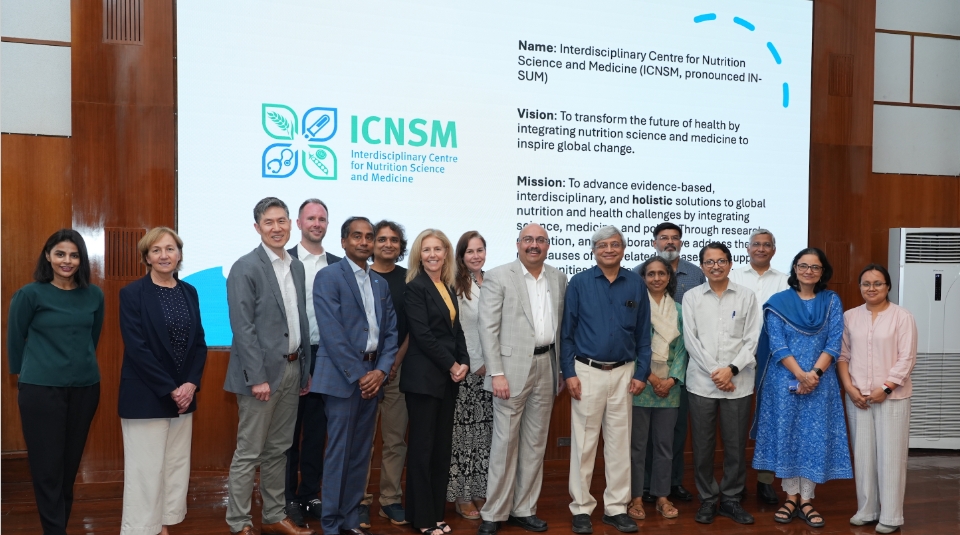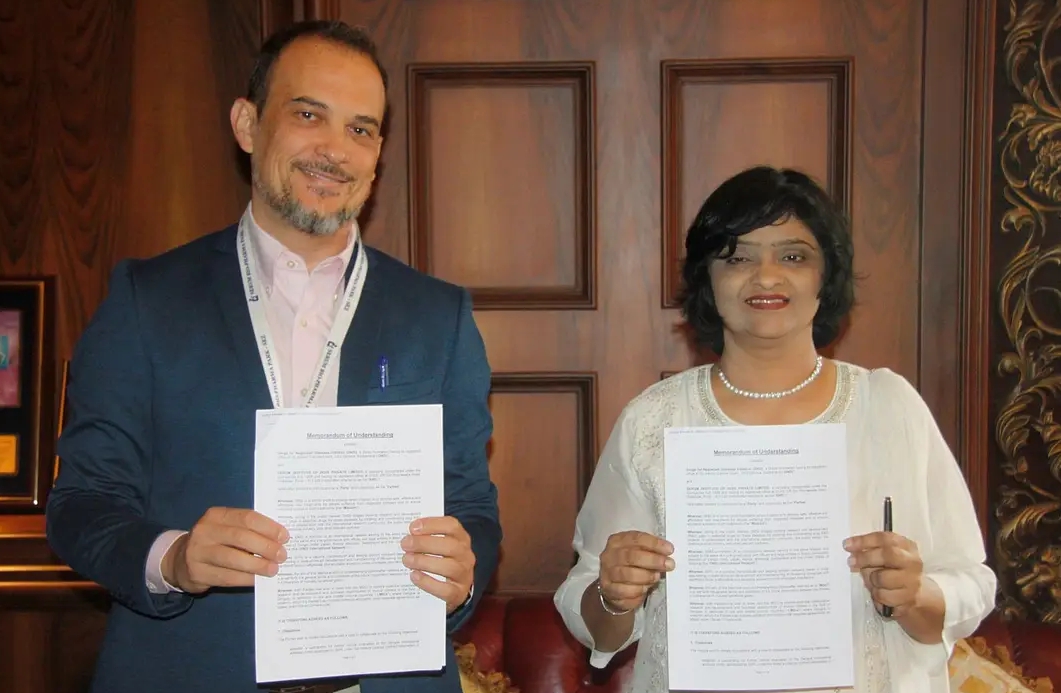Indian Pharma Exporters Recalibrate Strategies Amid US Drug Price Cuts
June 30, 2025 | Monday | Features | By Sanjiv Das
US President Donald Trump’s recent announcement to cut the cost of prescription drugs has jolted Indian and APAC manufacturers. While this new development comes a few months after the initial pharma tariff move, Indian pharmaceutical companies aren't left with much choice except to strategise their next steps pragmatically. Here we seek some clarity about what stance the Indian manufactures might take to counter such economic bullying tactics of countries like the United States.
image credit- shutterstock
The Trump administration is at it again and after the pharma tariff saga, the US President has signed a wide-reaching executive order (EO) on May 12. The EO directs drugmakers to lower the prices of medicines to align with what other countries pay. The price cut range may be from 30 to 80 per cent. Drugmakers are required to make the price changes within a month from the date of issuance of the order, failing which, punitive action would be taken. This is all part of the so-called Most Favoured Nation (MFN) pricing framework by the US that has set alarm bells ringing.
The US pays the highest prices for prescription drugs, sometimes nearly three times more than other developed nations.
Impact if any?
India’s pharmaceutical export to the US is around $9 billion contributing to about 40 per cent of the US generic market. It may be noted that the policy was initially floated during Trump’s first presidency but was blocked by numerous legal challenges. Big Pharma’s contention is that drug discovery research is very expensive and risky and takes about $2 billion to discover a new molecule, in which the US is the world leader.
Talking about the 30-day deadline announced that seems to be a short notice, Ravi Shah, Partner, Cyril Amarchand Mangaldas, stated, “The 30-day deadline places significant pressure on global pharmaceutical supply chains, but for most Indian generic drugmakers, the immediate operational impact is likely to be limited since the order is primarily aimed at branded medicines. However, the constantly evolving position of the US government underscores the need for Indian companies to remain agile and closely monitor the US regulatory and trade policy changes to be able to suitably adapt its strategy for the US market.”
Sharing his views Dr Ajit Dangi, President and CEO, Danssen Consulting, observed, “While it is difficult to assess the full impact of this policy, since Indian generics are already priced competitively compared to prescription drugs, this EO is unlikely to have a major impact on Indian generic drugs exporters. However, Indian companies who have significant US exports like Sun, Dr. Reddys, Cipla, Lupin, among others, may need to recalibrate their export strategies. Apart from pricing, Indian pharmaceutical companies are also likely to face tariff increase and therefore need to explore possibilities of putting up manufacturing facilities in the US or acquire small generic companies or have a tie up there. Non-tariff barriers like stricter cGMP compliance by US FDA, already flagged by Trump, is likely to be another challenge, increasing the cost of manufacturing. To guard their export revenues, Indian companies will have to cast their net wider and explore markets other than the US.”
Shedding more light on the impact of the policy, Chakravarthi AVPS, Senior Vice President (National) and Chairman of AP and Telangana, Federation of Pharma Entrepreneurs (FOPE) clarified, “The policy seems to target expensive branded drugs more than generics, and our low-cost production gives us an edge. Plus, legal fights and delays, like what happened in 2020, could push the real effects to 2026 or later. I see some companies trying to set up factories in the US to avoid possible tariffs, but that’s super expensive—hundreds of crores—so it’s not easy. In the long run, I believe leaning on government programmes, like those pushing local raw material production, will keep us competitive. Indian generic makers will face tougher times and need to adapt, but they’re in a better spot than US companies selling pricier drugs. Smaller firms might struggle, though. We should watch for updates on US rules and any tariff talks to know what’s next.”
Kiran Mazumdar Shaw, Chairperson, Biocon Group said, “I believe this order does not target generics and biosimilars, which already provide affordable alternatives under the Affordable Care Act (ACA). It also does not aim to equalise drug prices with developing economies. The Indian pharmaceutical industry, particularly in the generics and biosimilars sector, is well-positioned to support this shift with its proven capabilities in cost-efficient, high-quality manufacturing. This executive order therefore strengthens the greater adoption of generics and biosimilars.”
Time for clarity and recalibration
Donald Trump’s announcement is not the first price reform and probably will not be the last. Indian and APAC pharma companies need a shift from being price warriors to becoming innovation-led, quality-focussed, globally responsive organisations. Trump’s MFN policy directly targets pricey branded medicines, but its impact on generics cannot be overlooked. Reduced benchmark prices in the OECD nations will apply global pricing pressure on suppliers, reducing margins, and in turn cause reimbursement bottlenecks in the future.
Indian pharma companies are primarily involved in generic drugs which are very low in prices, than the prescription drugs cost and already over 80 per cent cheaper for insurance payors. From antiretrovirals for HIV to affordable cancer therapies, India's pharmaceutical industry is vital to global health.
Expressing his views Ranjit Barshikar, CEO – QbD International, United Nations Advisor, Member of Editorial Board of Journal of Generic Medicine UK said, “While the global pharma giants are surprised by the price cut executive order, Indian industry voices suggest that domestic drugmakers are unlikely to be affected. The generics industry is not likely to be impacted, as it operates on very low margins already. The President's order stresses on the cost of innovation / R&D should be shared equitably among all stakeholders and with a 30-day window to align their US prices with MFN pricing, giant companies are expected to be affected. India’s generic drug industry, which is not only a source of low-cost medicines in India but also in the US and UK.”
Hyderabad-based HRV Global Life Sciences has invested in a virtual manufacturing model that brings flexibility, cost-efficiency, and rapid regulatory adaptability. The convergence of AI, predictive inventory tools, and federated compliance intelligence is what the company expects to help win in a margin-sensitive world.
Hari Kiran Chereddi, Managing Director, HRV Global Life Sciences and CEO, New Horizon Global Pharma mentioned, “Instead of panicking, I believe the time is for clarity—and for recalibration. We must map a structural shift towards volume-based approaches to value-based models. This is an urgent invitation to diversify. We have already begun increasing our presence in geographies beyond the US—namely the EU, LATAM, MENA, and Southeast Asia. The MFN pricing shock affirms that a globally diversified portfolio is no longer optional; it is strategic insurance. If US Big Pharma is forced to scale back on marginal therapies, Indian and APAC firms can become global go-to partners for value-priced substitutes. The cost advantage that sets our positioning can now be focused on building trusted therapeutic relationships.”
Umang Vora, MD and Global CEO, Cipla while announcing the financial results recently mentioned that the US government's order to pharma firms to lower the cost of prescription medicines within 30 days will not impact Indian generic drugmakers. The EO is probably going to impact branded drugs. Vora said, “What we understand is that this is largely targeted towards branded drugs. As of now, what we understand is that this is a voluntary measure that perhaps the companies will be taking. There are aspects of MFN clauses etc and it is not clear as of now how and in which manner the EO will be implemented.”
Nilesh Patel, Managing Director, Kashmik Formulation opined, “The downward trend in Indian pharmaceutical stocks is more sentiment-driven than a reflection of long-term industry fundamentals. The branded drugs represent a different segment than the generic pharmaceuticals exported by India. As a result, the immediate impact on the Indian generic drug segment is limited. Trump also mentioned implementing a MFN policy, but the specifics of this policy remain unclear. Without concrete guidelines, the broader implications for foreign drug manufacturers, including those from India, are speculative. Indian-manufactured medicines constitute only about 11 per cent of the total US pharmaceutical market. Hence, even if price reforms are implemented, the overall impact on the Indian pharmaceutical industry is expected to be moderate in the short to medium term.”
A multi-pronged strategy
Indian companies will have to move up the value chain and work on complex generics and biosimilars where price erosion after patent expiry is minimal. In fact, India should capitalise on drugs like GLP -1 receptor agonist, a current block buster weight loss drug, which is aggressively priced in the US, and whose patent in India is likely to expire in 2026. A multi-pronged strategy is the only answer to face this challenge.
Not just relying on cheap labours, a proper implementation of technology should be in place. This will help to reduce cost significantly in the long run and improve the quality of medicine and in an environment-friendly way. Focus on value and not volume and investing on value-based products, innovations will help Indian pharma companies bypass these threats. Or it will make the pharma industry difficult to survive.
Dr Ranjan Chakrabarti, Advisor-Drug Discovery and Biopharma, Ex VP-Drug Discovery, Dr. Reddy's Laboratories and US Pharmacopeia is of the opinion that this move should be considered as an opportunity to produce quality medicines and also expand home grown capabilities. “Top Indian pharma companies have their manufacturing units in the US, they can exploit this provision. Most of our SE Asian neighbours are already ahead of us in this aspect. Pharma companies should always be prepared for audit, i.e., their quality system should be developed enough to face audit any time. There is a need to fast-track US-based manufacturing through streamlined permitting and technical assistance”, remarked Dr Chakrabarti. “Also, unannounced foreign inspections can be eliminated where it will benefit more than 600+ Indian facilities exporting to America. This will ensure production of better-quality medicine, which is a problem in many of our SMEs”, he added.
Dr Chakrabarti recommended detailed reporting of ingredient origins with potential cross-contamination penalties. According to him, it will boost the effort to produce an API inside India. The Government of India has certain specific plans to bring back API production to India and the industry with the government can work together to speed up the implementation.
What lies ahead?
Any form of threat perception resulting in panic is nothing new from a country like the US. Post the tariff announcement by the Trump administration, within a month came the executive order to slash the price of prescription drugs. And more such EO’s must be waiting in line to be announced.
Economist Intelligence Unit, the research and analysis division of the Economist Group, differs, wherein it maintains that Donald Trump’s move to improve price transparency has already helped to cut prices. Whether the EO will be effective enough to cut prices depends on negotiating acts. Drug imports have drastically risen due to stockpiling of prescription drugs with long shelf lives. Though there are mentions of high investment plans, no mention was made about Indian pharma companies.
It is best to wait, watch and take proactive strategic steps to ensure that India pharma does not succumb to any pressure or economic arm twisting.
Sanjiv Das
sanjiv.das@mmactiv.com










